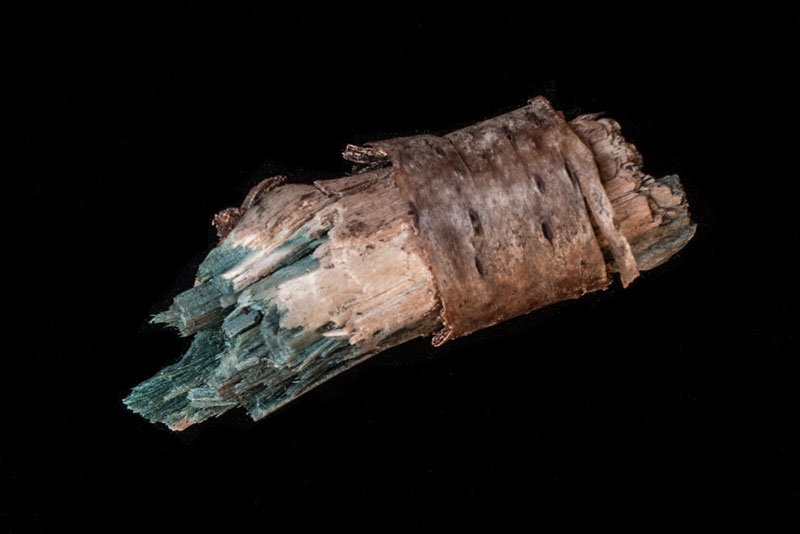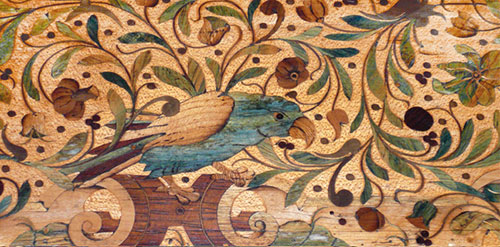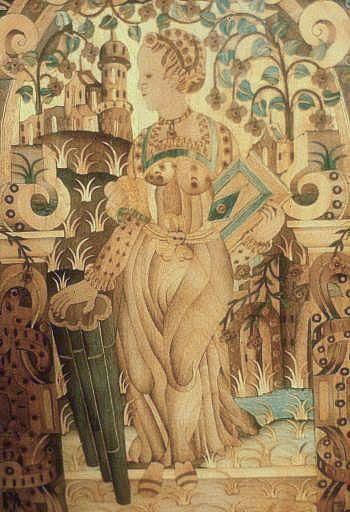

I occasionally come across fallen birch twigs that are a shocking blue-green color. Fellow hikers have had the same reaction that I had — that the color does not look natural ; someone must have dyed the wood.
When Museum curators saw that same hue in artwork by Italian furniture makers working in intarsia –- elaborate designs made with inlaid wood –- they too thought that the wood was dyed. However, scientific analysis of the artwork showed that the blue-green wood is an example of spalting – the coloring of wood by a fungus, in this case, the elf-cup Chlorociboria aeruginascens. Fifteenth and sixteenth century artists used the green wood to depict grass, leaves, bird feathers, animal eyes, and luxurious clothing. Back then, chlorociboria-infested wood was as valuable as precious metals.
